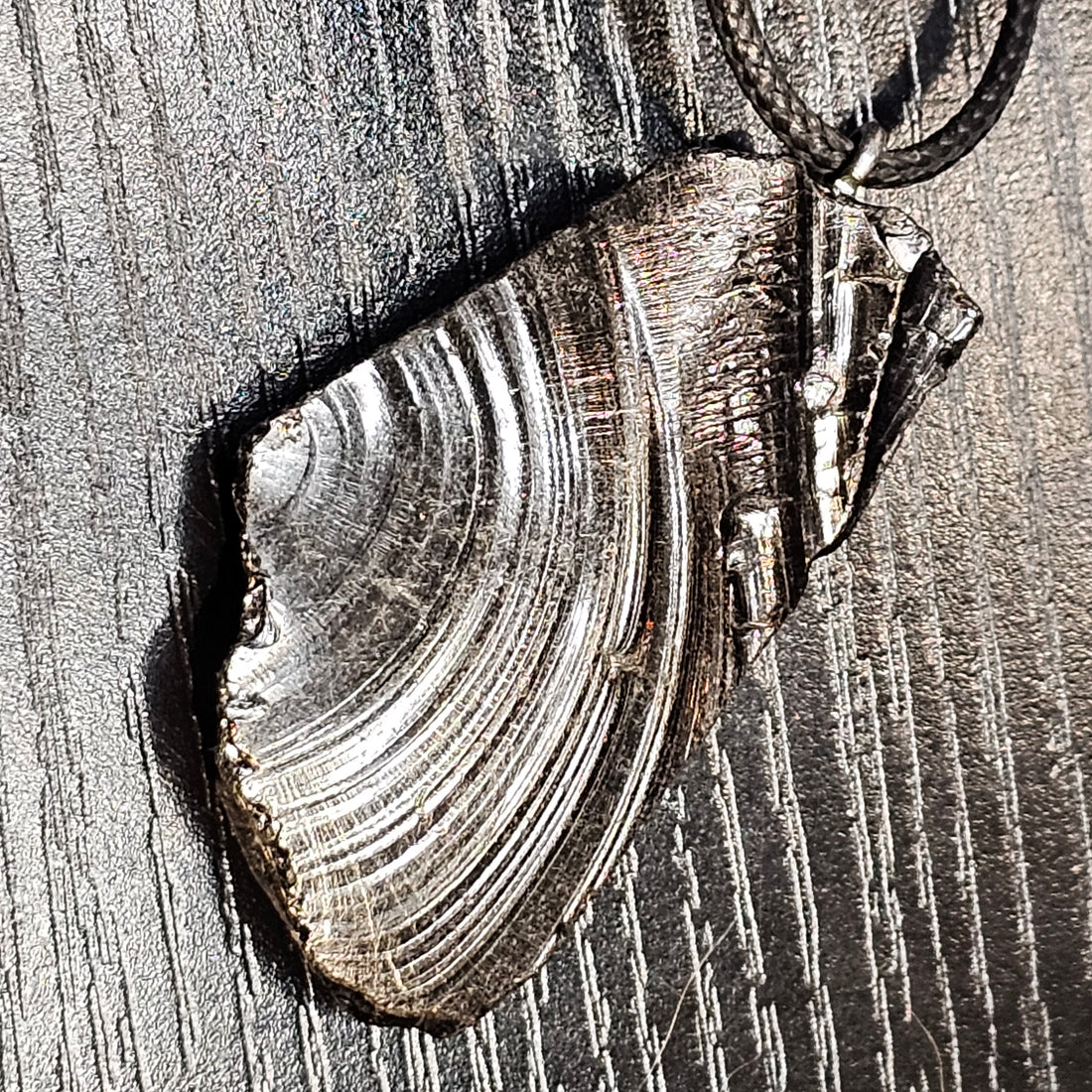
Question: Is Deep Mine Shungite 97% Carbon? Or 97% Fullerene?
Share
This email came in today from a curious researcher, and he poses an excellent question. He read an article that I had read in the past that claims to profess knowledge that is not sourced, supported, nor explained correctly. He wrote:
"In their article they state the following: 'As a result, the authors concluded that the content of fullerenes in the classic black shungite TYPE-3 from the Zazhogino deposit (sh-3) is 1%. While the amount of carbon in shungite TYPE-1 (sh-1) is 1.5-2%, depending on the extraction conditions.'"
"And a little later based on further research they state the following: 'The amount of C60 fullerenes is about 2% on a sample of shungite from the Zazhoginsky deposit 60*60 µm in size (the thickness of a human hair), which is about 340 molecules.'"
"It seems based on the research done in this area that there is only a small amount of fullerenes in type 1, 2 or 3 shungite so I was wondering if you could comment on this since you seem to say something completely different on your website."
"I would also like your comments on this article on the Shungite C-60 site as what they say about the different types of shungite does not correlate with what you say on your site and in your videos."
As Shungite is relatively a new "hot" topic, (as well as ancient as the hills), there are two propositions regarding its efficacy; there is the folklore of centuries of use for healing, which led to the deep dive analysis of what gives it the unique properties for medical and industrial use. Your questions are about the second approach, which I will address here.
As you probably have read, the unique "magical stone" qualities of Shungite have been uncovered for scientists to examine, and that is the Fullerene allotrope of 60 carbons clumped together. Your questions seems to be: a) what percentage of shungite is actually carbon, and of that carbon, what percentage is the allotrope structured like soccer balls (fullerene).
LAB TESTING
We have tested our samples at the source using visible microscopy, refractometry, elemental analysis, and molecular spectroscopy on untreated samples from the deep mine (which is where my type 1 DMG samples are sourced). Their Carbon content is 97.8% with trace amounts of other materials.
Your question is what percentage of this rich carbon is actually fullerene in content, and you are asking based on the article that you and I have both read, an article which is factually incorrect throughout. I'll explain this hopefully, clearly.
Diamond is a carbon allotrope of uniform purity (if it is a good -meaning very expensive- sample). You can see the uniformity in clarity, in cleavage angles, color, etc. There will be impurities found in lower quality diamonds (carbon inclusions) that are visibly not part of the crystalline uniformity of the rest. So we can look at the diamond, and without having to burn it, know that it is pure carbon. Once we test it for pure carbon content, this just shows the mineral analysis. It does not show the allotrope structure. This has to be done qualitatively, sufficiently accurately, with the naked eye (or with laser vaporization of carbon plasma, which would be grossly impractical)
Shungite, especially my deep mine shungite (DMG), has unmistakably physical characteristics that show the uniformity and crystalline structure. Smack it, and it will shatter like a coke bottle or glass, and leave a shatter pattern that looks wave-like.

This is due to the homogeneity of the sample. If the sample were not uniformly crystalline in structure, shatter patterns would not be wave-like, as impurities would interrupt the wavelike shatter pattern, and would show itself as brittle impact. My deep-mine Type 1's show a beautiful shatter pattern. You can not see this in a sample that was not of uniform crystalline structure, and you cannot have structure uniformity like this outside of the presence of carbon, which as you may nor may not know, derives its amazing usefulness from having tetrahedral geometry which allows the crystals to form.
Secondly, you asked about the testing for resistance. When I test for resistance, I set the squelch at 200k ohms of resistance. This shows me the lovely signal area between noise and distortion, giving me the cleanest indication of how fast the electrons move through the sample. People with a rudimentary knowledge of electricity and magnetism assume that electrons travel at the speed of light through a conductive material, and that is completely incorrect. Electrons move slowly through an entirely conductive sample, taking random paths from one probe to the other. An amazing example I found of this was a "Shungite" vendor who tried to prove that his large coal rock was shungite when what he was doing was proving that it was not shungite. You can see this video here: https://www.youtube.com/watch?v=dnctL9TDoBw
MEASURING RESISTANCE
In this, he correctly sets the squelch at 200k ohms, but as you see, he is poking the poor rock all over the place and getting different results of resistance, never quite reaching zero.
It sounds like you have somewhat of a basic, rudimentary knowledge of electricity and magnetism, so it won't be lost on you that the reason the electrons move in response to EMF's is from the eddy currents when the shungite encounters a radiation source. This is what I am testing - how fast and how reliably does the conductivity test show a free flow of electrons from one pole to the other. Non-shungite samples will bounce all around resistance values, as if it is confused (which it is) without landing rapidly, or reliably on zero. Check out this video: https://youtu.be/Dn3lu0rRWnc?si=sLORreJW8sSqfM_f&t=304
Like many of the articles I've read, the one you sourced is ill-informed, speculative, and comes to conclusions which it does not support.
Thanks for the really great question - you have good insight and instincts for research!
Gary




